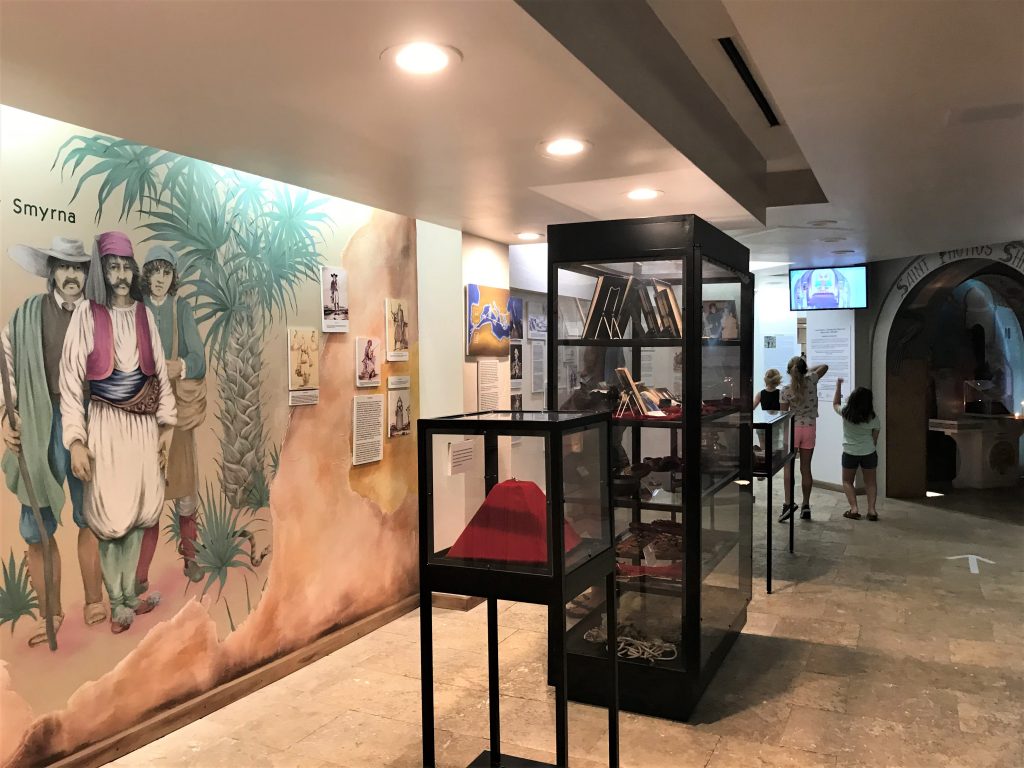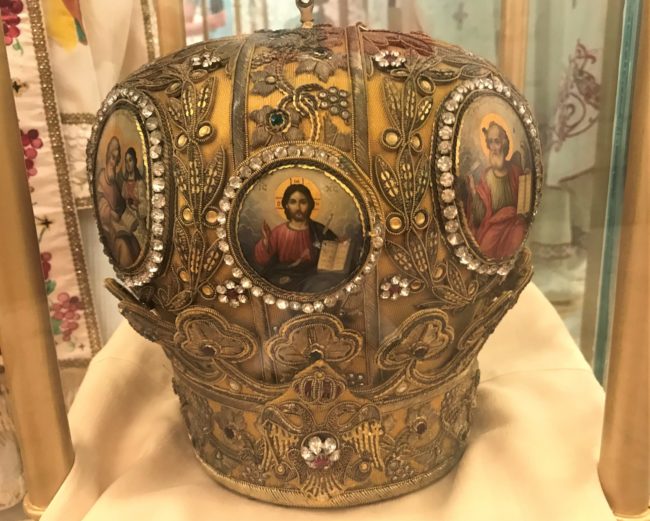On our recent trip to St. Augustine, we walked along the bustling, pedestrian-only St. George Street where restaurants and gift shops competed for our attention.

Yet it was the quiet and serene courtyard with music sounding like monks that drew us into St. Photios Greek Orthodox National Shrine. I had read about it in our tourist literature and it was on my list to see. However, I was expecting a large sanctuary-type building. Instead, this appeared to be a 17th-century house.
The Chapel
Inside, arrows led the way to the chapel where the low lighting and cool tile floors contrasted sharply to the sunny, humid day outside. The shrine’s low ceilings depicted beautiful frescos and the room felt almost cave-like – something the early Christians in Rome probably felt in the catacombs.

I remembered a fact from our trip to Croatia and Montenegro a few years ago: traditional Eastern Orthodox churches don’t provide pews or seating since the congregants stand during the church services. This was no different. To our right and left, candles burned on marble stands.
The Museum
The rectangular-shaped exhibit room detailed the history of Greek immigrants. A Scottish doctor named Andrew Turnbull recruited over 1,400 poor people from Greece, Italy and surrounding areas to work at his large Florida plantation as indentured servants around 1767. Because the ship left from Minorca, these immigrants are referred to as Minorcans.

Conditions in the new land proved harsh as over half of the workers died within the first two years. The atrocities grew worse with starvation, beatings and enslavement. Around 1777, a few escaped to St. Augustine and reported their poor living conditions to Governor Tonyn. An enemy of Dr. Turnbull, the governor freed them all where they settled in the Minorcan Quarter in St. Augustine.
The Creed Room
The next room highlighted vestments worn by bishops in the Greek Orthodox church. Given as gifts from Bishop Demetrios of Xanthos, Archbishop Iakovos of America and others, each garment signifies sacred meanings.

Not only would one wear a robe (sticharion), but a stole (epitrachelion) around the neck and special cuffs (epimanikia) worn on the wrists. A higher level priest and the bishop would also wear a 12-inch by 12-inch square near their right thigh called an epigonation. The bishop’s head covering (miter) was exquisitely detailed, as well as the Pectoral Cross and Engolpion worn at the chest.
Icons covered the walls flanking the glass cases of vestments. Some looked very old and simple, some were more elaborate and showy – but all were beautiful. On the fourth wall hung the Nicene Creed.
The museum ended at a very well-stocked gift shop. As we exited, we saw a plaque explaining the history of the property. Built in the 1700s by the Avero family, this site housed the Greek refugees when they fled Andrew Turnbull in 1777. Due to its historical significance, several Greek Orthodox parishioners purchased the house in the mid-1960s. After going through fundraising efforts, the archdiocese purchased the house and reconstructed it into a national shrine. Archbishop Iakovos dedicated it in 1982.
For more information, visit their website here.

